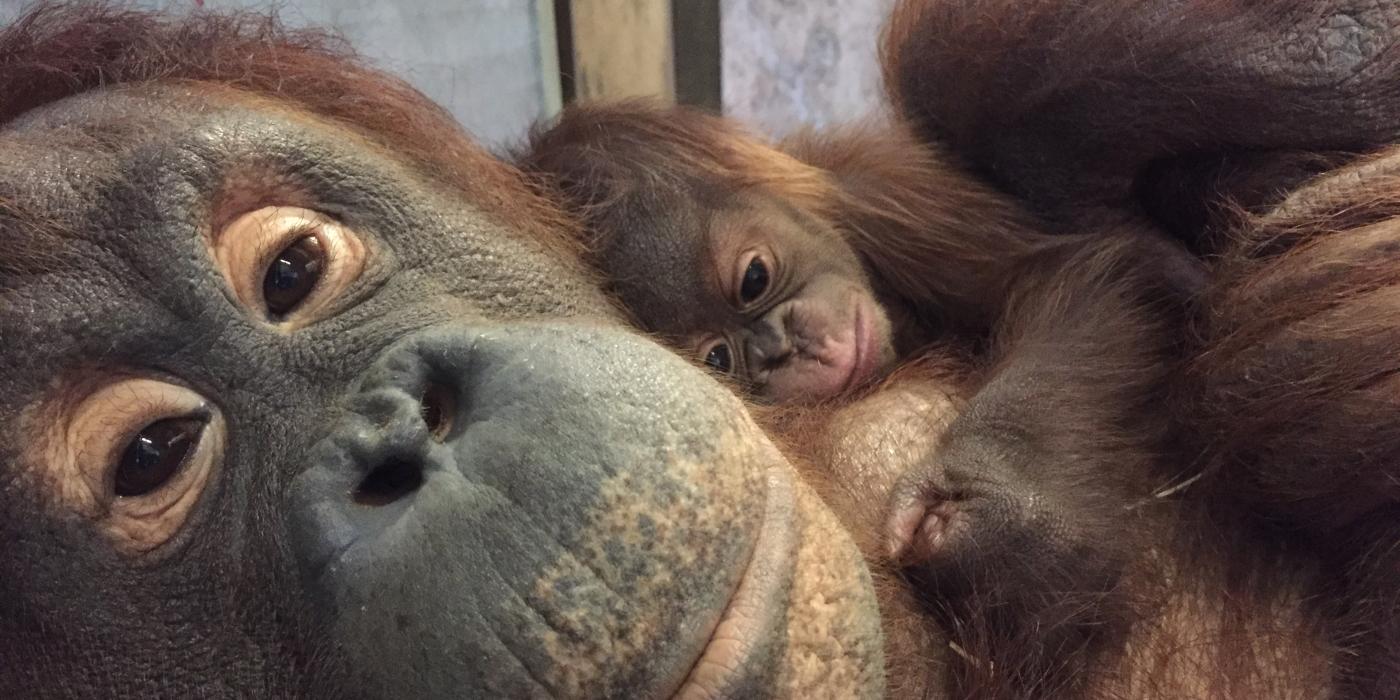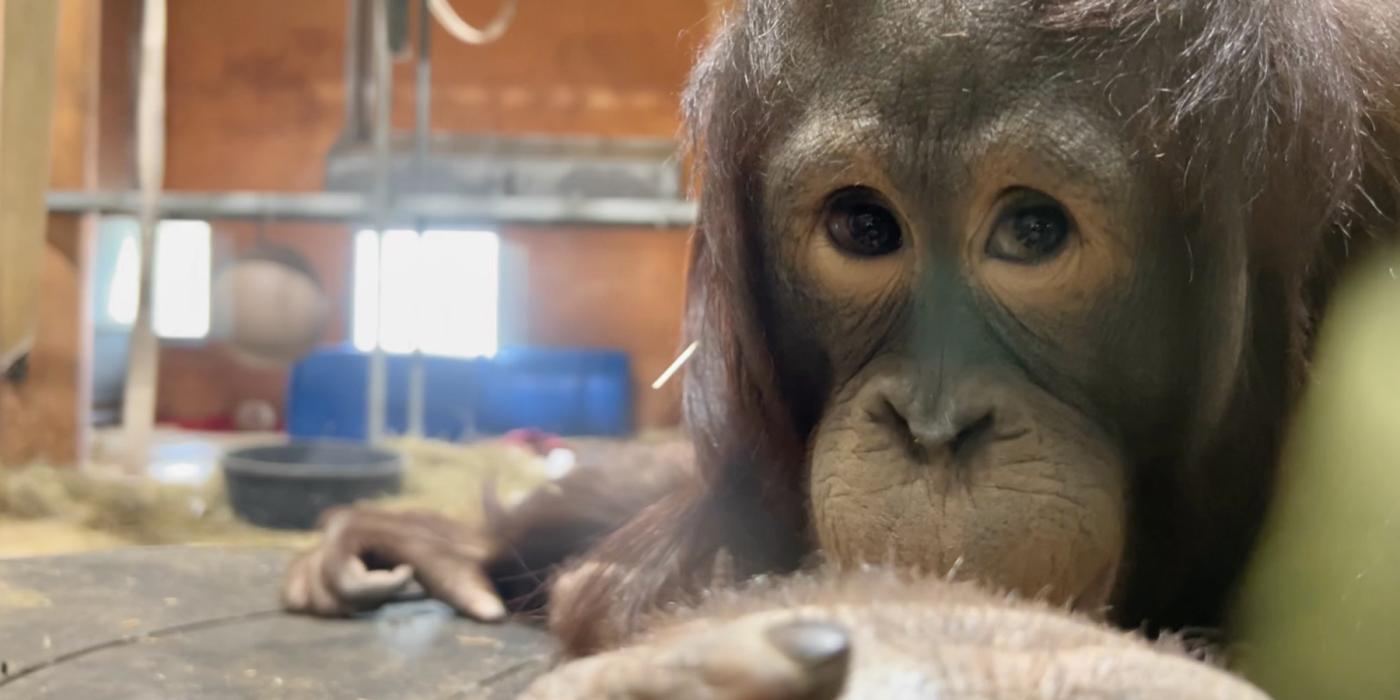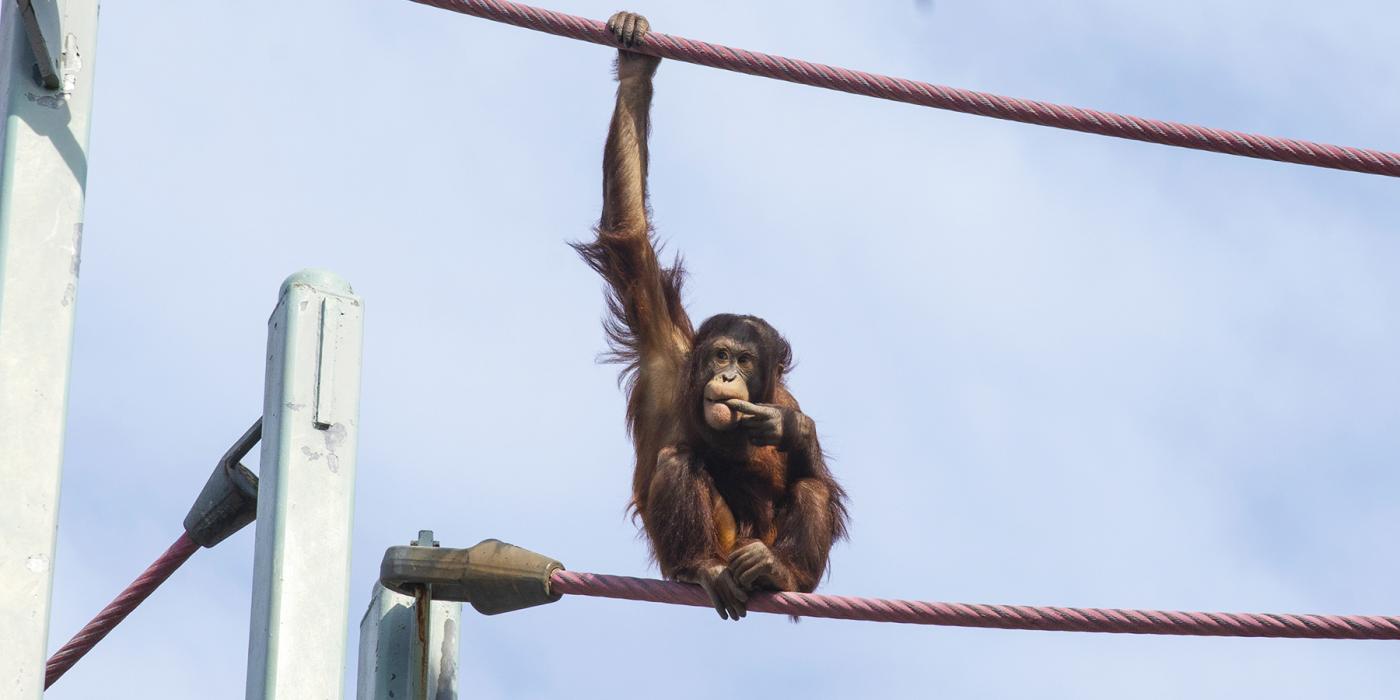A Motherhood Learning Curve for Batang
The newest member of our primate family has arrived! Meet Redd, a Bornean orangutan born to mother Batang and father Kyle on Sept. 12. In our latest #OrangutanStory update, keeper Erin Stromberg reveals how our first-time mom is adjusting and bonding with her newborn.
How are Batang and Redd doing?
Both mom and infant are doing great! As a first-time mom, Batang has had a bit of a learning curve. Most recently, she’s been trying to figure out the best way to move around the exhibit while carrying Redd. She doesn’t quite realize that if she gets up to move around, he’ll hang on. But he does! In fact, Redd sometimes holds on a little too well, and she has to untangle his little hands and feet from her hair.
Recently, she positioned him on top of her head, which looked a bit funny and awkward to the keepers, but it left her hands free. She’s most active when she’s confident in his ability to hang on tight.
What do they do during the day?
Much of Batang and Redd’s days are still spent in her nest. As she gets more comfortable carrying him, we expect that she’ll move between the public exhibit and the off-exhibit nest more frequently. Over the coming days and weeks, keepers will work with Batang to re-establish her routine. But, for now, we’re following her lead.
It’s important for staff to monitor what Batang is eating. Aside from offering her food through the mesh, we also put food in puzzle feeders and other enrichment items. One of her favorite treats is applesauce, which keepers pour into a long, narrow metal tube. She’ll take a piece of bamboo and use it as a tool to scoop the applesauce out. She seems willing to participate as long as she can scoop with one hand and hold Redd with the other.
Batang has visual access to Bonnie and Kyle through a “howdy door.” Last week, she built a nest next to the door, and the two took turns looking at Redd. As Batang’s confidence and comfort level grow in the coming weeks, we’ll arrange for visitations between Bonnie, Batang and Redd without a barrier between them.
How do you evaluate Redd’s health?
The bond between a mother orangutan and her infant is incredibly strong. To ensure that they maintain that bond, we—keepers and veterinarians—are hands-off with Redd. Instead, we look for natural signs that he’s doing well.
Is he strong and clinging to mom? Yes.
Is he nursing well and frequently? Yes.
Is he vocal, and is mom attentive to those vocalizations? Yes.
He’s bright and alert. He’s also urinating and defecating normally.
We’ve built a trusting relationship with Batang over the years through positive reinforcement training. Our hope is that in the coming weeks, she’ll be willing to participate in the training while holding Redd. That way, he will still be with her, but it will give us an opportunity to listen to his heart and lungs.
For the time being, we’re focusing on getting Batang back into the groove of her regular training behaviors. Sometimes she feels like participating, and sometimes she doesn’t. It’s up to her. As Redd grows, he will also learn to voluntarily participate in his own health care—with a little help from mom.
Related Species:




